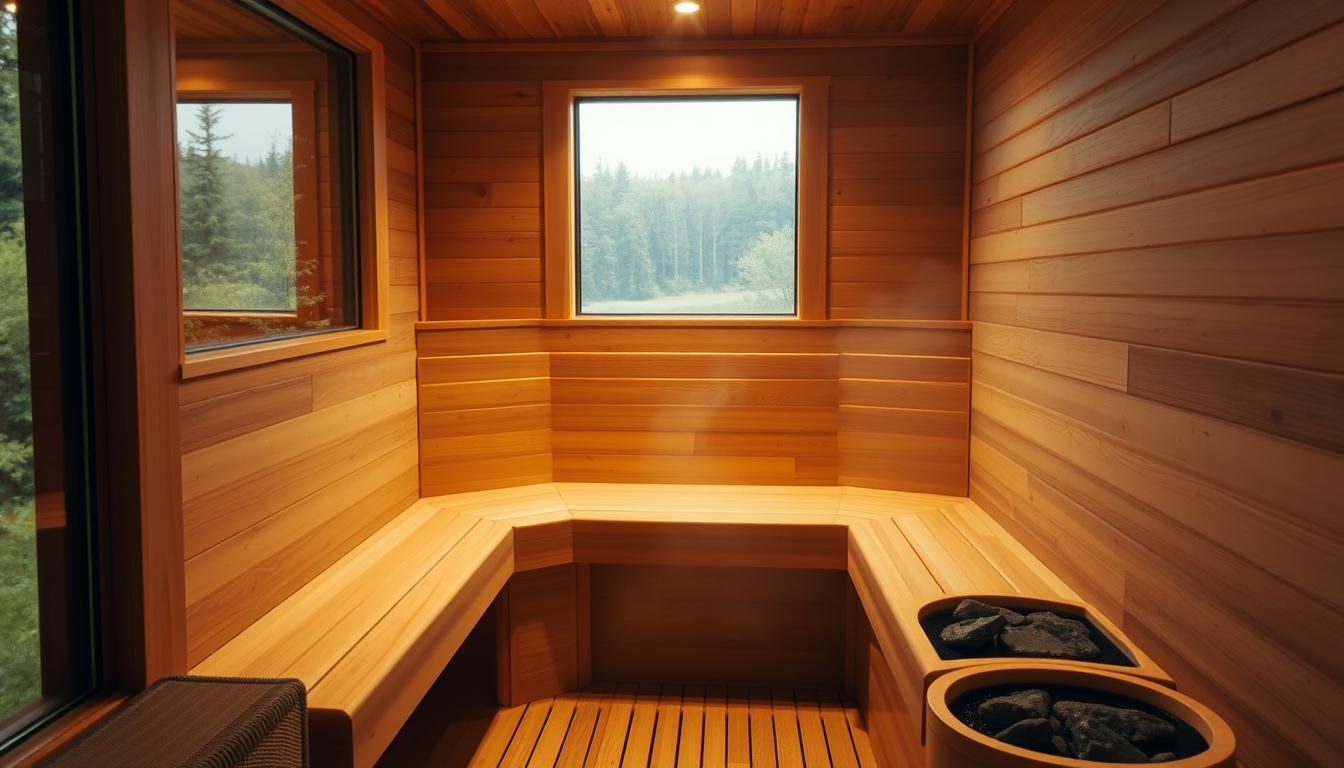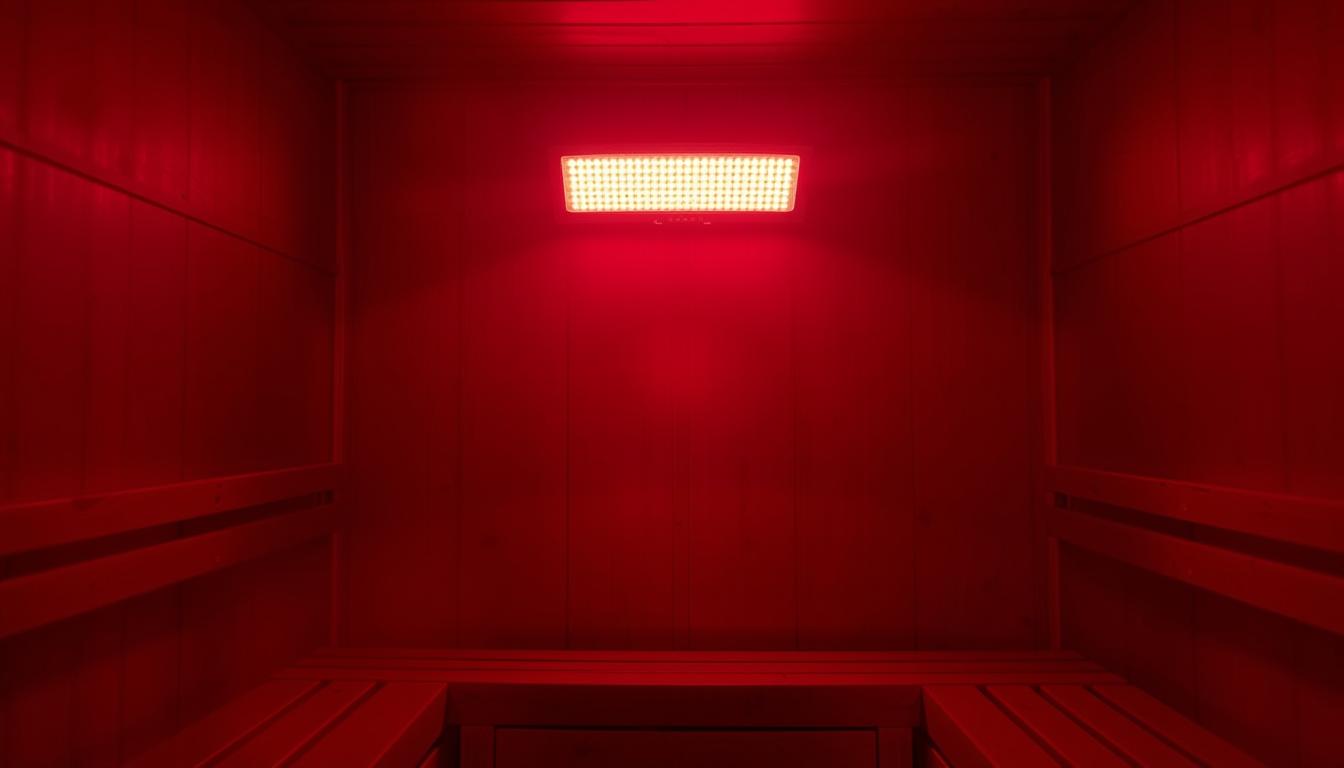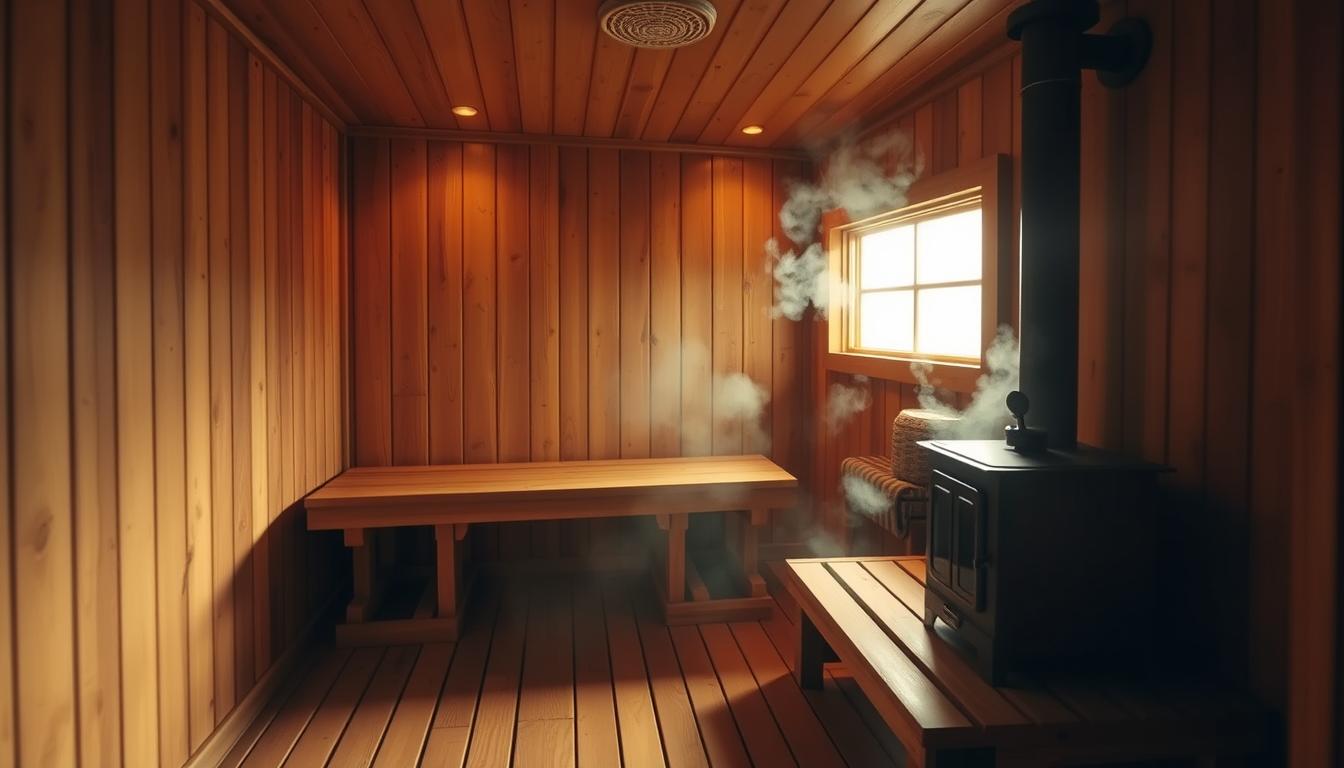
Best Time to Sauna for Maximum Health Benefits Explained

Choosing when you use a sauna depends on what you want from it. Experts note there is no single optimal hour; mornings, evenings, or post-workout windows each offer distinct benefits.
Morning heat can sharpen focus and lift energy for the day. A small Japanese study linked early sessions with improved work efficiency.
Evening exposure helps many people wind down. Heat raises core temperature, and the later drop supports melatonin release about two hours after a session, aiding sleep.
After a workout, short sessions support circulation and recovery. Hydration and electrolytes are essential when combining exercise and heat.
Safety first: people with unstable blood pressure, heart disease, pregnancy, or certain medications should skip or modify use and consult a clinician.
This guide will help you identify your main goal, pick a suitable window, and adjust duration and heat for steady, science-informed gains.
Key Takeaways
- Pick a window based on your goal: clarity, sleep, or recovery.
- Morning warmth may boost focus; evening warmth can ease sleep onset.
- Post-workout sessions aid circulation but require fluids and salts.
- Heat raises core temperature and triggers adaptive benefits over sessions.
- Consult a clinician if you have heart, blood pressure, or pregnancy concerns.
How Timing Affects Your Sauna Session: The Science of Body Temperature and Benefits
https://www.youtube.com/watch?v=Uv9vIyRX9WM
Heat exposure quickly changes circulation and temperature. Peripheral vasodilation sends more blood to the skin, heart rate rises, and sweat ramps up to cool the body. People can lose about a pint of fluid in a short session.
Core body temperature increases during a session, which initiates a controlled heat stress response. This raises skin blood flow and relaxes muscles, helping with recovery and cardiovascular markers when used safely.
Why timing shifts outcomes
When done in the morning, the arousal and endorphin surge can boost alertness and set an energetic tone. In contrast, evening sessions often lead to a gradual drop in temperature after exit, which supports melatonin onset and relaxation.
Role of circulation and stress adaptation
Increased blood flow delivers oxygen and nutrients to tissues, easing tension and aiding recovery pathways. Repeated exposure builds tolerance and can alter cardiovascular and neuromuscular responses over weeks.
- Shorter, moderate sessions sharpen focus mid-morning.
- Longer sessions finished 90–120 minutes before bed support wind-down.
- Hydration and electrolytes matter when sweat and heart rate rise.
Track how you feel at different times and adjust your session pattern to match desired effects while minimizing stress and overexertion.
Morning vs Evening Sauna: Choosing the Best Time for Energy or Sleep
Choosing morning or evening heat changes how the body and mind respond across the day. Small shifts in schedule affect mood, core body temperature, and how well you sleep.

Morning benefits for clarity and productivity
Morning sessions of about 10–20 minutes at moderate heat tend to lift mood and sharpen focus. A 2015 Japanese study linked early sessions with better daytime work efficiency.
Finish with a cool rinse and sip water during the day to rehydrate without disturbing sleep later.
Evening strategy for wind-down and sleep
Evening exposures work best when ended roughly 90–120 minutes before bed. The post-heat drop in temperature supports melatonin release and can shorten sleep latency.
Keep evening sessions shorter and milder to reduce late-night thirst and awakenings.
How long and how hot: practical guidelines
Adjust session length and heat around workouts and health status. If you exercise the same day, avoid intense heat right before training and hydrate carefully afterward.
| Goal | Duration | Intensity |
|---|---|---|
| Morning clarity | 10–20 min | Moderate heat |
| Evening sleep support | 8–15 min | Gentle to moderate |
| Post-workout recovery | 5–15 min | Short, moderate |
- Monitor perceived mind clarity, stress, and sleep latency.
- Those with heat sensitivity or medical conditions should use milder parameters and seek advice.
Pre-Workout or Post-Workout: Using Sauna Around Exercise the Smart Way
Using heat after a workout can speed recovery by increasing circulation and promoting repair.

Post-workout gains
After training, a short 10–15 minute session raises blood flow to muscles and relaxes tense fibers. Heat may also upregulate heat shock proteins that assist tissue repair and support muscle recovery.
Pre-workout cautions
Entering exercise already heated raises fatigue and dehydration risk. Elevated heart rate and fluid loss can reduce performance and increase injury risk, so pre-workout heat is generally discouraged.
“Prioritize post-exercise exposure for circulation and recovery; avoid heavy heat before intense workouts.”
Hydration and cooldown protocol
- Begin hydrated; include electrolytes during long sessions or hot days.
- Cool down from exercise before the session and rinse sweat quickly.
- Finish with a cool, gentle shower or walk to normalize heart rate and body temperature.
Safety note: those with heart or blood pressure issues should get medical clearance. Stop the session for dizziness, nausea, or an unusual heart response.
best time to sauna if Your Goal Is Heart Health, Muscle Recovery, or Stress Relief
Aligning your heat sessions with daily rhythms helps match physiological recovery and stress relief needs.
Heart health and blood pressure
Schedule sessions during natural relaxation windows, such as after work or early evening, to pair lower sympathetic tone with heat. Regular, moderate sessions—rather than rare long exposures—show the most consistent cardiovascular benefits.
People with known heart disease or unstable blood pressure should seek medical clearance and monitor readings when changing their routine.
Muscle recovery
On training days, use short post-workout heat to aid circulation and recovery. On rest days, a separate moderate session keeps blood flow steady without adding fatigue.
Stress relief and mental clarity
Late morning or mid-afternoon sessions can counter the afternoon slump and boost focus. Pair brief breathing or mindfulness with exposure for stronger stress reduction.
Detox expectations and electrolyte balance
Set realistic goals: the liver and kidneys do most detox work; sweat removes only small amounts of compounds. Heat does, however, deplete sodium and potassium.
- Replace fluids and electrolytes after sessions.
- Wait 1–2 hours after a large meal before using heat; a light snack is fine.
- Track resting heart rate, sleep latency, perceived stress, or soreness to refine your schedule.
Midday and Workday Sauna Use: Focus, Calm, and Sustainable Energy
A short midday heat break can reset focus and cut through the afternoon drag. Compact sessions during the work day can lift alertness and lower stress without long recovery.

Avoiding the afternoon slump: short sessions for attention and performance
Try 8–12 minutes at moderate heat. These brief exposures refresh concentration while limiting sweat loss and fatigue.
Pair the session with mindful breathing for added relaxation. Finish with a quick cool rinse and a few quiet minutes before returning to work.
Scheduling around meals and meetings: best way to time use sauna at work
Plan sessions at least 60–90 minutes after a meal to reduce post-meal sluggishness. Keep sessions short on days with intense training or if feeling unwell.
“Short, scheduled breaks can support focus and calm without disrupting a busy workday.”
| Use case | Duration | When during the day |
|---|---|---|
| Midday refresh | 8–12 min | Early afternoon, after lunch buffer |
| Quick stress reset | 6–10 min | Between meetings |
| Energy sustain | 8–12 min | Mid-afternoon dip |
- Pre- and post-heat sips of water and a light electrolyte are advised on warm days.
- Respect workplace facilities: shower quickly, store devices, and keep noise low.
- People with high-stress roles or mental tasks may benefit most from regular midday resets.
Safety First: Who Should Skip Certain Times and How to Lower Risk
Not everyone should use heat the same way. People with unstable blood pressure, known heart disease, pregnancy—especially in the first trimester—and respiratory conditions need medical clearance before regular sauna use.

Specific medical cautions
Uncontrolled high or low blood pressure and arrhythmias raise the risk of dizziness or fainting during sessions. Pregnant people should avoid long or hot exposures without clinician approval. Those with asthma or other breathing issues may find high temperature or humidity triggers symptoms.
Session length, frequency, and practical limits
Keep single sessions under 20 minutes for most adults. Beginners should start at 5–10 minutes and build tolerance slowly.
- Healthy people may tolerate up to two short sessions per day, but cumulative heat and dehydration raise risk.
- Avoid heavy heat immediately after exhaustive exercise if you feel dizzy, tachycardic, or unwell.
| Concern | Guideline | Action |
|---|---|---|
| Uncontrolled blood pressure | Avoid or get clearance | Monitor readings; skip if unstable |
| Heart disease / arrhythmias | Medical clearance required | Limit temperature and duration |
| Pregnancy | Avoid high heat, especially early | Ask provider about safe use |
| Respiratory conditions | Test short exposure | Stop if breathing worsens |
Reduce risk by hydrating, replacing electrolytes, cooling down gently, and stopping at warning signs such as lightheadedness, chest pain, severe headache, or trouble breathing. People on medications that affect sweating or blood pressure should consult a clinician before regular sauna use.
Create Your Personal Sauna Schedule: Sample Times for Different Lifestyles
A simple weekly plan helps people fit regular sauna sessions around work, workouts, and family life. Short, consistent exposure often gives more steady benefits than rare long sessions.
Weekday professional: 10–12 minute sauna sessions mid-morning or early afternoon for focus. On high-stress days, add a 15–20 minute early evening session for calm.
Athlete / active: after workouts use a 10–15 minute post-workout session for circulation and recovery. On rest days opt for 15–20 minutes to support blood flow to muscles without over-fatigue.
Sleep-first plan: finish a gentle 10–15 minute sauna session 90–120 minutes before bed to use the post-heat drop in body temperature and ease sleep onset.
- Recovery rotation: keep sessions shorter after leg day; slightly longer after upper-body workouts if tolerated.
- Hydration checkpoints: sip water and take electrolytes before and after. A light salty snack helps if sweat is heavy; limit late fluids to protect sleep.
- Busy-parent template: aim for two to three 10-minute sessions per week — a weekend morning boost and a midweek early-evening calm.
Personalize by tracking sleep, soreness, and perceived stress. Adjust temperature and session length and schedule around meals, meetings, and shared-sauna etiquette. For people with heart health concerns, consult a clinician before regular use.
Conclusion
Match your routine with a single goal and let short, regular exposures build steady benefits.
Morning sessions often serve energy and focus, evening exposure can aid sleep, and brief post-workout heat supports muscle recovery and circulation. Use moderate temperature and sensible durations; steady cadence beats sporadic extremes for lasting health effects.
Safety first: know limits, rehydrate, replace electrolytes, and cool down slowly. People with heart, blood pressure, respiratory issues, or pregnancy should seek medical advice before regular use. Sweat removes little in the way of toxins; support liver and kidneys with good nutrition and fluids.
Pick one window this week, set a 10–15 minute session using sauna bed or suite, track how your body and mind respond, and adjust from there.
FAQ
What physiological changes occur in the body during a sauna session?
During a session, core body temperature rises and blood vessels dilate, increasing skin blood flow and heart rate. This heat stress triggers heat shock proteins, promotes sweating for thermoregulation, and shifts circulation away from internal organs toward the skin. These responses support muscle perfusion after exercise and can activate cellular stress pathways linked with resilience and recovery.
How does the timing of a sauna affect relaxation, performance, and recovery?
Timing influences hormonal and autonomic responses. Morning sessions can boost alertness and circulation, aiding daytime focus. Evening sessions encourage parasympathetic activation and can help sleep onset by promoting post-session cooling and melatonin release. Placing sessions after workouts enhances muscle blood flow and recovery, while pre-exercise heat may impair performance if it causes dehydration or fatigue.
Is it better to use a sauna in the morning or evening for energy and sleep?
Morning use often increases mental clarity and daytime energy by raising heart rate and circulation. Evening use supports wind-down when followed by gradual cooling; it may improve sleep quality for many people. Choose based on your priorities: use morning for daytime performance and evening for sleep support.
How long should sessions be, and what temperature is appropriate at different times of day?
Shorter sessions (8–15 minutes) at higher temperatures suit midday or post-workout boosts. Evening sessions are typically 10–20 minutes at moderate heat to avoid overstimulation before bed. Adjust intensity to fitness, heat tolerance, and hydration status; always start lower and increase gradually.
Should I use the sauna before or after exercise?
Post-exercise use is generally safer and more beneficial for recovery. Heat increases blood flow to muscles and supports removal of metabolic byproducts. Pre-exercise heat can raise perceived exertion and risk dehydration, reducing performance unless the exposure is brief and followed by cooling.
What are the risks of using heat before a workout?
Risks include elevated heart rate, early fatigue, reduced power output, and increased fluid loss. These effects can impair training quality and raise injury risk. If using heat pre-workout, keep sessions brief, rehydrate, and allow time for heart rate and core temperature to normalize.
How should I hydrate and manage electrolytes around sauna sessions?
Drink water before and after sessions; include electrolytes if sweating heavily or after intense exercise. A practical protocol: 12–16 ounces (350–475 ml) 1–2 hours before, 8–12 ounces (240–350 ml) after each short session, and add a balanced electrolyte beverage when sessions are long or repeated. Monitor urine color and thirst as simple guides.
What cooling steps should follow a session to normalize heart rate and temperature?
Use a gradual cooldown: sit briefly, take a lukewarm shower, rehydrate, and rest for 10–20 minutes. Avoid sudden cold plunges if you have cardiovascular concerns; instead, reduce heat exposure progressively to allow heart rate and blood pressure to stabilize.
For heart health, when should sessions be scheduled?
Align sessions with lower-stress periods, such as early evening, to support blood pressure reduction and autonomic balance. People with hypertension or heart disease should consult a clinician, start with shorter, milder sessions, and avoid prolonged or repeated exposure without medical clearance.
When is sauna use most effective for muscle recovery after training?
The period immediately after training—once the heart rate begins to drop—is ideal. Heat enhances muscle blood flow and supports repair pathways. On heavy training days, keep sessions moderate in duration and prioritize rehydration and nutrition before entering the heat.
Can sauna sessions help with stress and mental clarity during the workday?
Short midday sessions can reduce stress and improve focus by increasing circulation and prompting relaxation afterward. Schedule them between meals and meetings, and allow time for cooling and rehydration so cognitive benefits carry into the afternoon.
How should someone schedule brief workday sessions without disrupting meetings or meals?
Aim for a 10–15 minute session during a mid-morning or mid-afternoon break. Avoid immediately after large meals; wait 60–90 minutes post-meal. Keep sessions short on busy days and plan a 20–30 minute buffer for cooling and recovery before returning to work.
Who should avoid certain session times or skip sauna use entirely?
Individuals with unstable blood pressure, recent heart events, pregnancy, or acute respiratory conditions should avoid prolonged or intense sessions and consult a healthcare provider. Older adults and people on medications affecting thermoregulation or blood pressure should use lower temperatures and shorter durations.
What is a safe frequency and duration for most healthy adults?
Many adults benefit from 2–4 weekly sessions of 10–20 minutes. Daily brief sessions are acceptable for some, but avoid multiple long sessions per day without medical advice. Monitor tolerance, hydration, and any symptoms like dizziness or excessive fatigue.
Does sauna use remove toxins, and how should expectations be set?
Sweating removes small amounts of certain compounds, but primary detoxification occurs via the liver and kidneys. Sauna supports circulation and may aid overall metabolic processes, but it is not a replacement for organ-based detox pathways. Maintain hydration and electrolyte balance for safe use.
How can I create a personal schedule for my goals (heart health, recovery, stress relief)?
Match session timing to your goals: early evening for cardiovascular relaxation, post-training for recovery, and midday for stress relief. Start with shorter, moderate-temperature sessions and adjust frequency based on tolerance and outcomes. Keep hydration and cooldowns consistent.
Are there differences between infrared and traditional steam rooms for scheduling?
Infrared saunas heat tissue at lower ambient temperatures and may allow longer, more tolerable sessions for some people. Traditional saunas produce higher air temperatures and sweating. Choose modality based on comfort, goals, and any medical advice, and follow the same hydration and cooldown practices.







Leave a comment
This site is protected by hCaptcha and the hCaptcha Privacy Policy and Terms of Service apply.